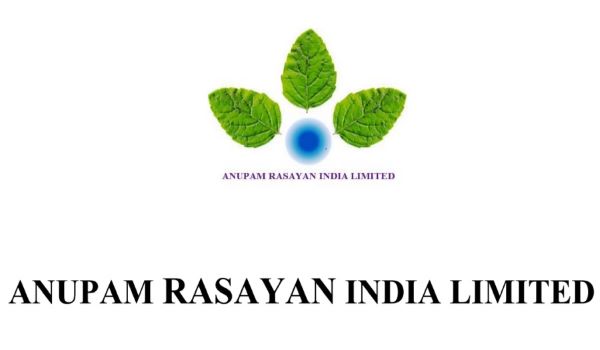The company increased its installed capacity to 27,200 tonnes in FY23 from 12,000 tonnes in FY18 and product offerings to 58 from 25

Ind-Ra continues to take a consolidated view of Anupam Rasayan India Limited (ARIL), its 99% subsidiary Jainam Intermediates Pvt. Ltd. and 25.79% subsidiary Tanfac Industries Limited (Tanfac), due to the strong operating and strategic interlinkages.
The upgrade reflects an improvement in the consolidated net leverage to below 2.0x over the past few quarters, aided by the consistently strong EBITDA margin in the range of 24%-29% and funds raised through a qualified institutional placement (QIP), as well as a decline in the working capital cycle in FY23. While the working capital cycle elongated slightly in 1HFY24, Ind-Ra expects the same to normalise in the near term. The upgrade also factors in ARIL’s track record of successful capex ramp-up over the past few years.
Strong Growth in Revenue and EBITDA; Margin to Remain Range Bound in Medium Term:
The consolidated revenue surged to INR16,019 million in FY23 (FY22: INR10,660 million, FY21: INR8,109 million), primarily driven by incremental volumes from an added capacity, as well as the consolidation of Tanfac into ARIL in FY23. On a standalone basis, ARIL’s revenue increased 19.6% yoy to INR12,841 million in FY23.
The consolidated EBITDA margin fell to 27% in FY23 (FY22: 28%; FY21: 24%) on account of a change in the product mix, as well as a fire-related incident in Unit 6. The company’s contracts with its customers allow for cost pass-through of increases in raw material prices, which has helped ARIL in maintaining steady EBITDA margins of 24%-28% over FY20-FY23 (FY23: 27%, FY22: 28%, FY21: 24%). Ind-Ra expects the EBITDA margin to remain at 24%-26% over the medium term. During 1HFY23, the EBITDA margin stood at 27%. On a standalone basis, ARIL’s EBITDA margin was 28.6% in FY23 (FY22: 28.3%).
New Project Capex to Drive Growth in Revenue and EBITDA:
ARIL has been incurring capex to add new products to its portfolio over FY21-FY23. It increased its installed capacity to 27,200 tonnes in FY23 from 12,000 tonnes in FY18 and product offerings to 58 from 25. The company is further expanding capacity, for which it is incurring capex of INR6,700 million; majority of which will be incurred in FY24. However, full revenue from the incremental capex will be realised in FY26-FY27.
The capex will primarily be in relation to the letter of intent and the contracts (which includes fluorinated products) worth INR76,690 million signed in the past two years, to be supplied over the next five-to-seven years, and would lead to capacity expansion at the company’s Sachin and Jhagadia plants. The management expects the return on capital employed of 20% and an asset turnover of 1.75x on the aforementioned capex. Capex will also be incurred FY25 and FY26, with the aim to support growth beyond FY27.
Moreover, ARIL acquired a 25.79% stake and management control in Tanfac, a specialty fluorides chemicals manufacturer, for around INR1,500 million in FY23. The acquisition is aimed at improving the backward integration of fluorinating agents such as potassium fluoride and hydrogen fluoride, which are the key raw materials in fluorination chemistry, and reduce the company's import dependence on China. Furthermore, with the ready availability of these two agents, ARIL plans to add more fluorination derivatives to its existing product portfolio.
Adequate Diversification across Business, but Customer Concentration Risk Remains:
ARIL had a portfolio of 58 complex products at 2QFYE24 with five new chemicals to be commercialised during the remainder of FY24. These products are sold to customers in India as well as abroad, with exports accounting for around 63% of the FY23 revenue (FY22: 56%, FY21: 58%). As a result, the company enjoys the benefits of adequate product and geographic diversification. In addition, the end-use industries catered to by the company is spread across agrochemicals (including crop protection), personal care, pharmaceuticals, specialty pigments, specialty dyes, and polymer additives. The supplier base also remains well-diversified, with only one of the suppliers accounting for more than 10% of total purchases in FY23. However, while the total number of customers remains healthy at 73 (of which 29 are multinational corporations), the revenue contribution from top 10 customers remained high at 82% in FY23 (FY22: 80%, FY21: 81%), thereby exposing the company to significant customer concentration risk.
Contracts with Cost Pass-through Provide Cash Flow Visibility: ARIL derived around 70% of its revenue in FY23 through two-to-five-year contracts. These contracts allow complete cost pass-through either on a semiannual or annual basis; according to the management, so far, all of its contracts have been renewed. In addition, for a majority of the products, ARIL is either the sole or the primary supplier to its customer. Consequently, the company enjoys long-term revenue and cashflow visibility, along with relatively stable margins, despite the significant volatility inherent to the industry.
The long-term cash flow visibility is further supported by the fact that many of the contracted customers are large and well-reputed multinationals, including Sumitomo Chemical Company Ltd., Syngenta, Dupont, Nissei Corporation, UPL Limited, and Adama Ltd., among others. Long-term visibility of cash flow further helps the company in effectively managing the capex cycle.
Subscribe to our newsletter & stay updated.